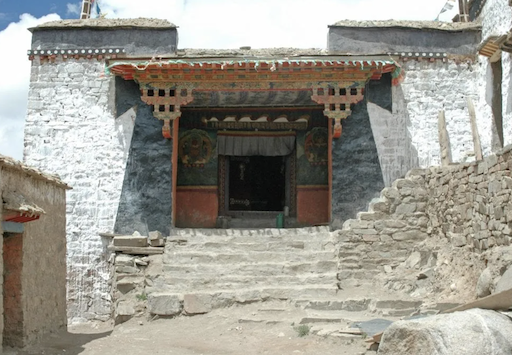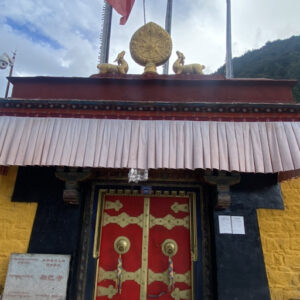This is a monastery which contains the cave where Milarepa was in sadhana.
There is a place to sit and meditate. You can go into meditative states here effortlessly.
How to Get There:
The sadhana place is inside the monastery. This monastery comes in part of Kailash parikrama or Kora. It is 14 kms east of Darchen
Map: https://maps.app.goo.gl/msHR9Z9nxjfwGPAi6
About Zuthulphuk Milarepa Cave
At the center of the monastery is a meditation cave associated with Milarepa. Kailash area was a scene of a clash between Milarepa representing Buddhism and Naro Bonchung representing Bon religion. The present-day Zutul Puk monastery location is one of the places of their encounter.
It started to rain, and Milarepa with Naro Bonchung agreed to make a shelter together. Miarepa placed a large stone slab making a roof before Naro Bonchung constructed walls. Milarepa adjusted the height of the roof by pressing it down with his foot first, and then pushing it up from the inside. That’s why there is his footprint of the top of the cave under the roof of the monastery. There are also his head and hand prints on the ceiling of the cave.
You can spend some time in the cave meditating.
About Milarepa
Jetsun Milarepa (c. 1052-c. 1135 CE) is generally considered one of Tibet’s most famous yogis and poets, a student of Marpa Lotsawa, and a major figure in the history of the Kagyu (Bka’-brgyud) school of Tibetan Buddhism. The essence of Milarepa lies in his writings rather than the legends that have grown up around him. The writings, often referred to as the Songs of Milarepa, are canonical Mahayana Buddhist texts and in particular emphasize the temporary nature of the physical body and the need for non-attachment. In contrast, the legends of Milarepa’s life are full of references to magic and lack the same sense of devout non-attachment. They are popularly known from the romanticized biography Mi-la-rnam-thar by Gtsang-smyon he-ru-ka rus-pa’i-rgyan-can (1452-1507); although they may be of questionable historic validity, the biographical details given in this article are based upon this account or its derivatives.



